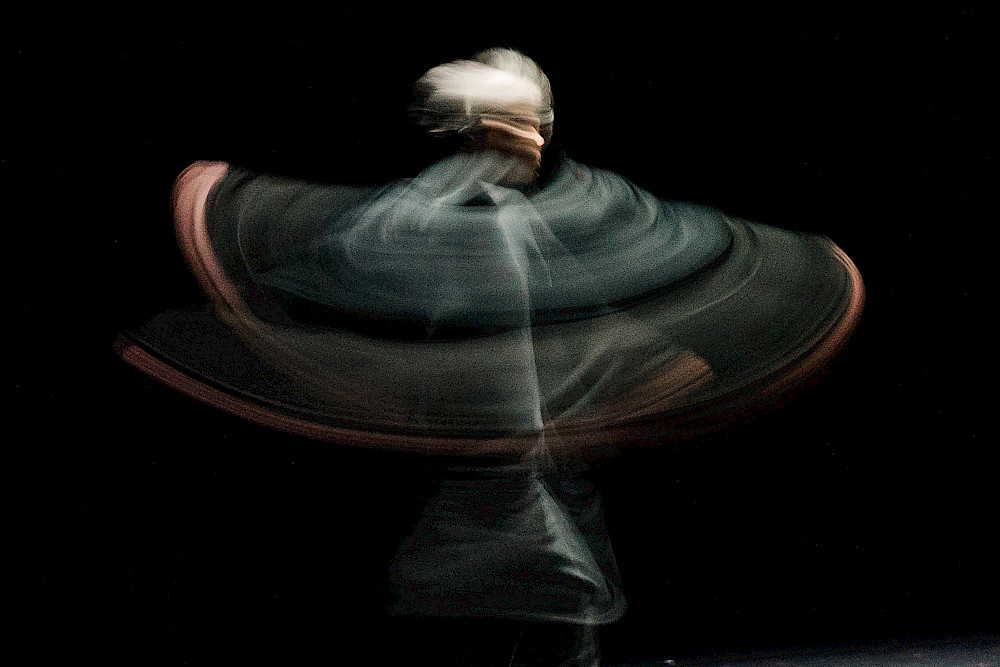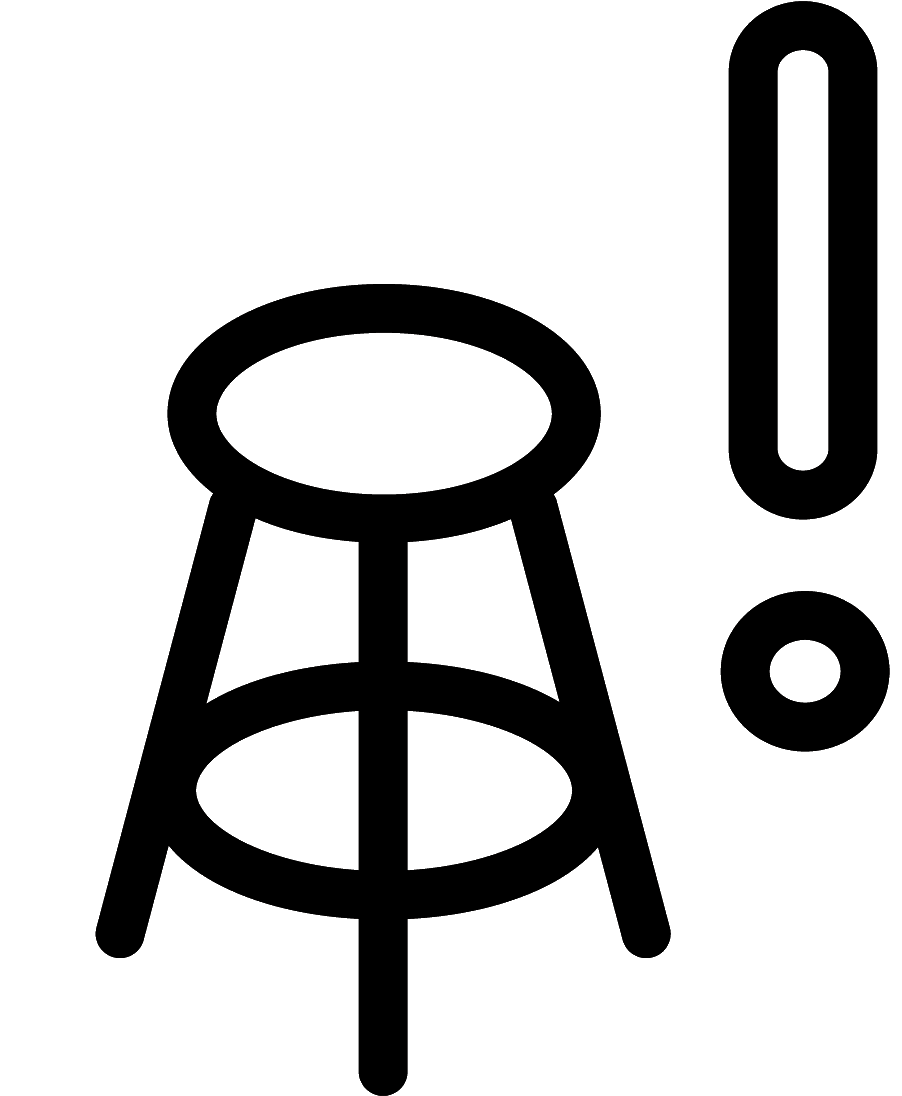10 — 13.05.2024
Nacera Belaza is known for her meticulous, minimalist and mesmerising choreography. Born in Algeria and now living in France, she translates diverse influences and dance traditions into addictive kinetic scores which cannot leave you unmoved. This is dance in its purest form, which needs to be experienced rather than understood. Two core research principles in Belaza’s body of work are ‘the circle’ and ‘rhythm’. In previous creations presented at the festival, Le Cercle (2019) and L’Onde (2021), she uncovered these research principles separately with determination and depth. Now they come together for the first time: on the one hand, the power of the circle in space, tracing its orbit around an unchanging centre, as if organising the disorder of disparate lives; on the other, the rhythm digging into time, lifting up bodies to grant them a dazzling freedom. Combined, the confrontation becomes a ritual practice opening up to a perpetual motion, a loophole to infinity. In this unique experience, the audience surrounds the dancers to contain their incredible energy. Not to be missed!
The Rhythm and the Circle
In 2022 you did a travelling residency in the United States with La Villa Albertine. What were you looking for in the United States?
On stage, I always try to get back to some sort of unknown – new paths for the body, a way of letting go and putting myself in listening mode. This state is at the heart of my creations, but hasn’t easily been related to my lifestyle. I wondered a lot about my approach, what I’d come to do in the United States, why the need to travel so far to find inspiration, and the very meaning of such a residency. I really wanted to meet Native Americans as I’d always felt close to these people in a certain way –in all created things they see a sacred dimension, an invocation of spirits. This mental and bodily state has always touched me, and it reminded me, strangely, of something we find in Algerians. Having undergone brutal colonisation and the Black Decade, Algerians no longer look to the future –they’re inward-looking with deep sorrow and hurt. I remember dancing over there, it must have been in 2001 or 2002; people told me that contemporary dance was not part of the Algerian identity, I heard things like: “Our identity is traditional dance, not contemporary dance. We don’t want to open up to that”. I’ve sensed that in Native Americans as well. It prevents you from seeing how much these peoples are connected spiritually, including through chants and dance. In Minneapolis, shortly before I left, someone suggested that I go to a powwow, an event where several communities of native Americans meet up in the wild to share moments of dance within a huge circle. Everyone taking part, with their specific characteristics, belongs to this circle where the musicians keep the shared rhythm going. The circle and the rhythm: that was the start of my research.
You’d already worked with these two motifs in your earlier creations. How does La Nuée connect them?
The rhythm –in Le Cercle or Sur le fil– put me in a certain almost trance-like state, while the circle – in L’Onde for example – was more inclined to create a deployment or an elevation. I couldn’t see how two such different states could be combined. But it came to me during the powwow. They solved the equation: everyone has a rhythm of their own inside the circle, but the circle is formed of all these rhythms. I started studying this back in France. But while the people taking part in the powwow each had their own dance in the circle’s trajectory, I introduced a different kind of fusion by putting the circle and the rhythm actually inside the body.
What happens in the body when these two forces meet?
I usually perform in my pieces and can say exactly what happens in my body. Here I’m mostly on the outside of it, but I know that there’s a feeling of being pulled in two directions. It’s complicated: the circle is a centrifugal force and the rhythm needs the floor and verticality. A dancer’s work is all about being able to combine these two things; unfortuna- tely I realise that they move more easily towards the circle. But at the same time, we’re not seeking to superimpose the two forces. So you have to make a new movement out of all the pieces. The aim of my research was to head towards what doesn’t yet exist and find a third way.
The music also seems to have two directions: the percussive beat and the vocal momentum. Did you also collect sound material in the United States?
What’s funny is that I wrote my piece L’Onde with music inspired by the powwow, but that isn’t the case here at all! We’d like to forge a logical connection, and that kind of music didn’t appeal to me here. For this piece, the idea took shape of an absence of melody: rhythms, distorting pulses, clapping that isn’t always regular. Then these voices appear that have a dual character, both singing and shouting, that almost become like wingbeats when you speed them up. I move around these things, including in the light where the dancers are often off-centre, on the edge and at the side.
You wanted to invite someone local to join the team in towns where you’re going to be performing La Nuée. Why is that?
It’s something that I’ve wanted to do for a long time. We were in the middle of creating La Traversée in Freiburg in Germany. We’d already spent eight months rehearsing with the dancers, and when we got there the director said that they’re used to having artists work with amateurs. My initial response was to say to myself: “Absolutely not! Why now? It’s going to change all our work.” But luckily there’s another voice that comes into my head and often saves me. It told me: “You don’t know that, stay open-minded”. So I agreed. The amateurs were extremely accurate, but more than anything it shifted the professional dancers in their score. There were some unknowns in all senses of the word. So in La Nuée the idea is to introduce a person so that we stay alert. We haven’t started doing that practically yet because at the moment everything’s chaotic for everyone. This disruptive element will come afterwards because I like to think that a creation is never fixed at the first performance.
- Interviewed by Léa Poiré in March 2024 for MC93
The first question came from an interview with Raphaël Bourgois for the Villa Albertine magazine. The full interview can be read here.
Presentation: Kunstenfestivaldesarts, Charleroi danse
Choreography, sound and light design: Nacera Belaza | Performers: Paulin Banc, Antoine Boisson, Eva Studzinski, Magdalena Hylak, Aurélie Berland, Lora Judokaite | Technical management: Christophe Renaud | Sound technician: Marco Parenti
Production: Association Jazz Ame - Compagnie Nacera Belaza | Coproduction: Kunstenfestivaldesarts, Charleroi danse, Festival d’Automne à Paris, MC93-Bobigny, Chaillot – Théâtre National de la Danse, Maison de la danse, Lyon – Pôle Européen de Création, Villa Albertine – French Embassy in the United States, Compagnie DCA / La Chaufferie | With the support of ACCN and A-CDCN in the frame of La Danse en grande forme: Cndc-Angers, CCN-Malandain Ballet Biarritz, La Manufacture – CDCN Nouvelle-Aquitaine Bordeaux La Rochelle, le CCN de Caen en Normandie, Boom’Structur, Comédie de Clermont-Ferrand, Centre chorégraphique national de Grenoble, MC2 : Maison de la Culture de Grenoble, Le Phare-CCN du Havre Normandie, CCN – Ballet national de Marseille, CCN d’Orléans, Le Gymnase CDCN Roubaix Hauts-de-France, La Place de La Danse – CDCN Toulouse / Occitanie, La Briqueterie CDCN du Val-de-Marne
Residence: Chaillot – Théâtre de la danse
The company is supported by the Direction régionale des affaires culturelles d'Ile-de-France – Ministère de la Culture et de la Communication as a subsidised company and by the Ile-de-France Region as part of its permanent artistic and cultural programme
Performances in Brussels with the support of the French Embassy in Belgium and the Institut français Paris as part of EXTRA, a program that supports French contemporary creation in Belgium


